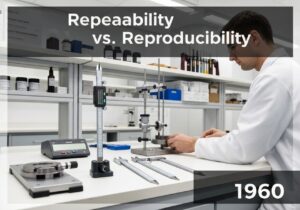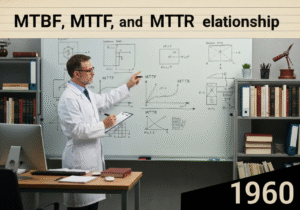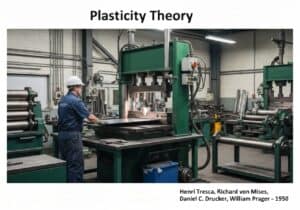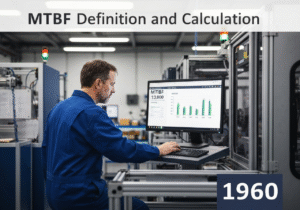评估测量系统中由于测量设备本身(可重复性)和使用设备的操作人员(可重复性)造成的变化量。
- 方法: 项目管理
量具重复性和再现性(R&R)

量具重复性和再现性(R&R)
- 持续改进, 六西格玛设计(DfSS), 加工能力, 流程改进, 质量保证, 质量控制, 统计分析
目标
如何使用
- 多名操作员使用同一量具多次测量同一工件。然后进行统计分析,确定可归因于测量系统的总过程变化百分比。
优点
- Helps ensure that measurement data is reliable and trustworthy; identifies sources of measurement error; essential for effective 过程控制 and improvement.
缺点
- 正确实施可能很费时间;需要精心策划和执行;结果的解释需要对统计的理解。
类别
- 精益西格玛, 制造业, 质量
最适合:
- 评估测量系统的精度和可靠性。
Gage R&R studies are widely implemented across various industries such as manufacturing, automotive, aerospace, and healthcare, where consistent and accurate measurements are paramount for quality control and assurance. This methodology is particularly applicable during the early stages of product development, pilot production runs, and ongoing quality monitoring. Participants typically include quality engineers, process engineers, and operators who utilize measurement systems to assess critical dimensions and performance metrics of components. By conducting experiments where multiple operators measure the same parts using a designated gage under similar conditions, organizations can determine the extent of variability that can be attributed to the measurement system itself, as well as to operator variability. In automotive manufacturing, for instance, Gage R&R assessments help to ensure that measurements of component specifications align with safety and performance standards, thereby avoiding costly defects and recalls. Data obtained from statistical analysis enables teams to pinpoint specific sources of variability, whether they stem from equipment calibration issues or operator technique differences. This knowledge informs decisions regarding training needs for personnel, adjustments in measurement procedures, or enhancements in measurement equipment, thereby leading to more reliable processes. Regular application of Gage R&R studies can reinforce a company’s commitment to maintaining high-quality manufacturing standards and facilitate continual improvement initiatives within quality management systems such as ISO 9001 or Six Sigma methodologies.
该方法的关键步骤
- Select measurement parts and ensure they represent the variation within the population.
- Train operators on the measurement procedure to maintain consistency.
- Have multiple operators measure the same parts multiple times using the same gage.
- Randomize the order of measurements to minimize bias.
- Calculate the variability components from the measurement data.
- Analyze the data using statistical methods, such as ANOVA or equivalent techniques.
- Determine the percentage of total process variation attributed to the measurement system.
- Evaluate and document whether the measurement system is adequate for the intended use.
- Identify and analyze sources of measurement error to improve the system.
专业提示
- Utilize control charts to monitor and visualize variation over time and operator performance during the Gage R&R study.
- Incorporate training sessions for operators before conducting Gage R&R studies to ensure consistency in measurement techniques and interpretations.
- Perform a multidimensional analysis that includes factor interactions in your statistical evaluation to identify nuanced sources of measurement variation.
历史背景
1950
1950
1959-11
1960
1960
1960
1961
1950
1950
1950
1960
1960
1960
1960
1963
(如果日期不详或不相关,例如 "流体力学",则对其显著出现的时间作了四舍五入的估计)。














相关文章
METS 卡路里计算器
元分析
信息映射
心理模型图
可接受的最大推力和拉力
物料需求计划(MRP)